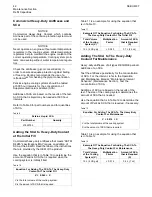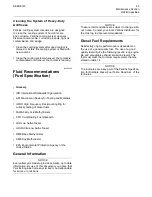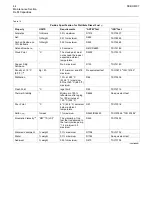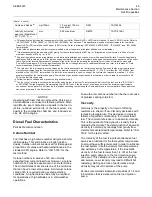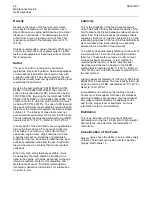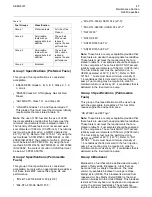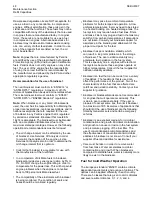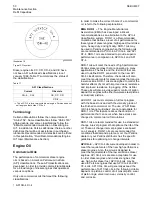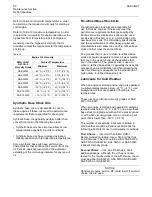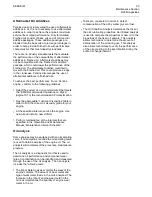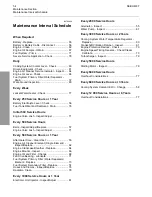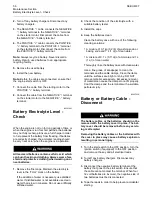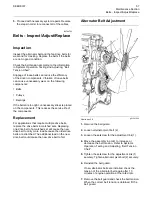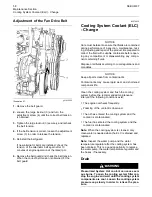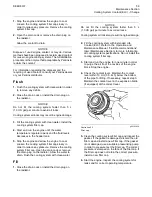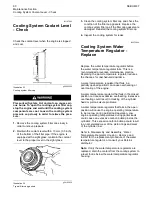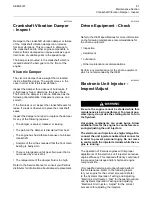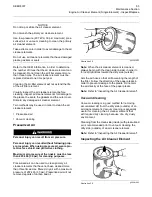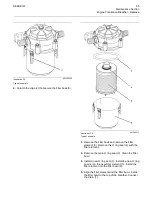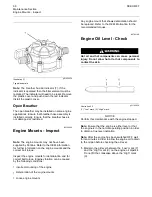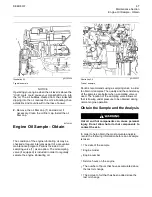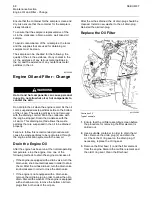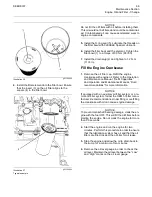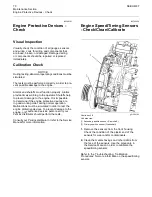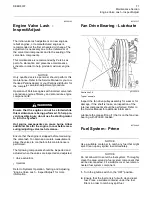
56
SEBU8337
Maintenance Section
Battery Electrolyte Level - Check
2.
Turn off any battery chargers. Disconnect any
battery chargers.
3.
The NEGATIVE “-” cable connects the NEGATIVE
“-” battery terminal to the NEGATIVE “-” terminal
on the starter motor. Disconnect the cable from
the NEGATIVE “-” battery terminal.
4.
The POSITIVE “+” cable connects the POSITIVE
“+” battery terminal to the POSITIVE “+” terminal
on the starting motor. Disconnect the cable from
the POSITIVE “+” battery terminal.
Note:
Always recycle a battery. Never discard a
battery. Return used batteries to an appropriate
recycling facility.
5.
Remove the used battery.
6.
Install the new battery.
Note:
Before the cables are connected, ensure that
the engine start switch is OFF.
7.
Connect the cable from the starting motor to the
POSITIVE “+” battery terminal.
8.
Connect the cable from the NEGATIVE “-” terminal
on the starter motor to the NEGATIVE “-” battery
terminal.
i02563861
Battery Electrolyte Level -
Check
When the engine is not run for long periods of time or
when the engine is run for short periods, the batteries
may not fully recharge. Ensure a full charge in order
to help prevent the battery from freezing. If batteries
are correctly charged, the ammeter reading should
be very near zero, when the engine is in operation.
All lead-acid batteries contain sulfuric acid which
can burn the skin and clothing. Always wear a face
shield and protective clothing when working on or
near batteries.
1.
Remove the
fi
ller caps. Maintain the electrolyte
level to the “FULL” mark on the battery.
If the addition of water is necessary, use distilled
water. If distilled water is not available use clean
water that is low in minerals. Do not use arti
fi
cially
softened water.
2.
Check the condition of the electrolyte with a
suitable battery tester.
3.
Install the caps.
4.
Keep the batteries clean.
Clean the battery case with one of the following
cleaning solutions:
•
A mixture of 0.1 kg (0.2 lb) of washing soda or
baking soda and 1 L (1 qt) of clean water
•
A mixture of 0.1 L (0.11 qt) of ammonia and 1 L
(1 qt) of clean water
Thoroughly rinse the battery case with clean water.
Use a
fi
ne grade of sandpaper to clean the
terminals and the cable clamps. Clean the items
until the surfaces are bright or shiny. DO NOT
remove material excessively. Excessive removal
of material can cause the clamps to not
fi
t properly.
Coat the clamps and the terminals with a suitable
petroleum jelly.
i02857256
Battery or Battery Cable -
Disconnect
The battery cables or the batteries should not be
removed with the battery cover in place. The bat-
tery cover should be removed before any servic-
ing is attempted.
Removing the battery cables or the batteries with
the cover in place may cause a battery explosion
resulting in personal injury.
1.
Turn the start switch to the OFF position. Turn the
ignition switch (if equipped) to the OFF position
and remove the key and all electrical loads.
2.
Turnoff any battery chargers. Disconnect any
battery chargers.
3.
Disconnect the negative battery terminal at the
battery that goes to the start switch. Ensure that
the cable cannot contact the terminal. When four
12 volt batteries are involved, the negative side of
two batteries must be disconnected.
4.
Tape the leads in order to help prevent accidental
starting.

